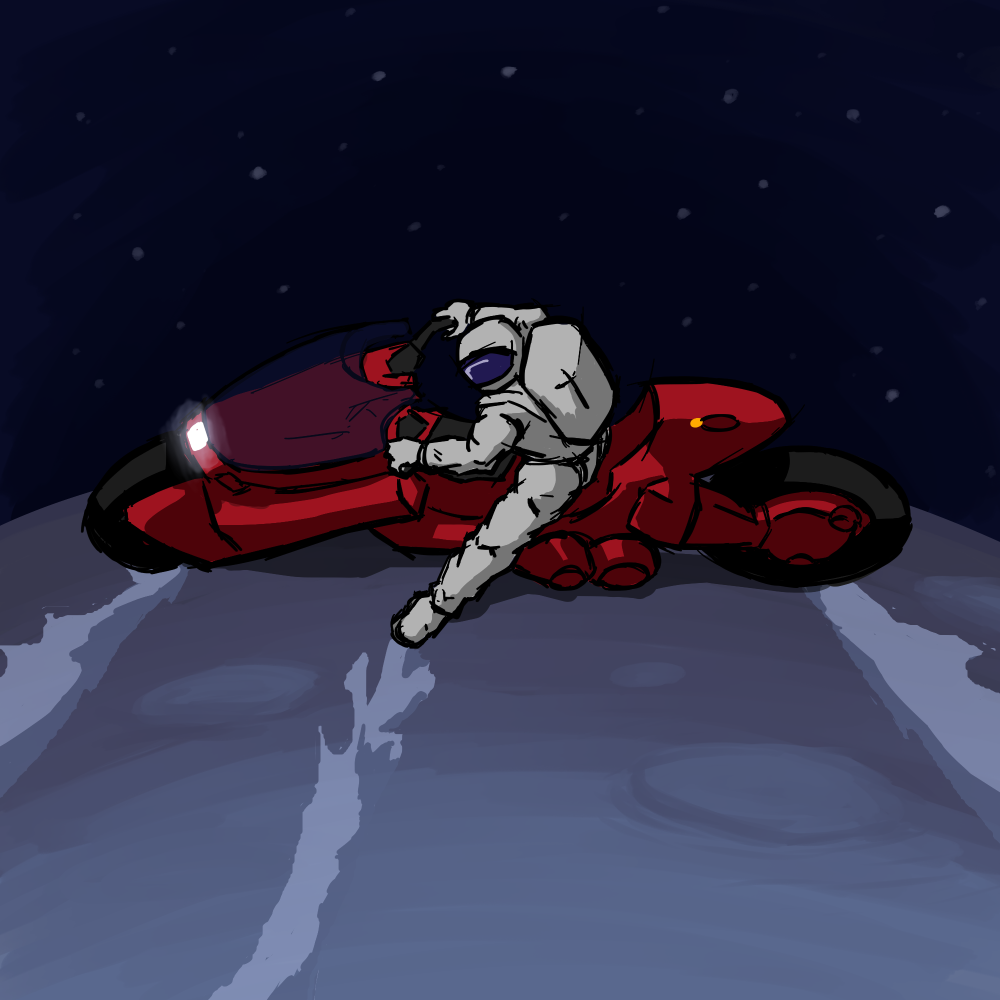Please visit response.fsu.edu for official FSU updates and resources.
Justifying Guts and Gore in Akira
 Warning: Spoilers for the film’s conclusion ahead!
Warning: Spoilers for the film’s conclusion ahead!
Commonly misconstrued as a genre, the fast-growing animation style of anime has affected both the Eastern and Western hemispheres. Its vast viewer demographics, ranging from youth to adults, have allowed both anime and its manga origins to flourish in recent decades. One film deemed an anime staple, the renowned cult classic, Akira, directed by Katsuhiro Otomo, has continued to captivate the population since its debut in 1988. The film’s appraisal clings to its hyperfixation on futuristic perceptions of existentialism and the excessive presence of violence. To some, the bloody action, which serves as a factor for the R rating, may be a put off, but its presence is what helped determine Akira as the “it” anime movie for decades to come.
The film details an out of touch reality for a motorcycle gang that inadvertently involves themselves with the discovery of a supposed higher being during post-apocalyptic Japan. The biker gang, led by protagonist Shotaro Kaneda, deals with conflict within their own close-knit group, along with government leaders, terrorists, cultists, rival gangs and more. Somehow, Tetsuo, a fellow amateur biker, who possesses a limited variation of the powers the supposed higher power should possess, remains at the center of all the chaos. With an amalgamation of characters and some form of slander on each, the presence of violence is inevitable and further exemplifies the reasoning behind the era surrounding the World War III aftermath.
Within the first ten minutes of the subbed film, a man is decapitated by Kaneda’s quickly-approaching, iconic, sleek red motorcycle found in any Akira movie poster. The unassuming civilian’s beheading is well defined in movement, but the headless illustration does not relish in detail. It instead maneuvers itself into each animated frame without gory accents. The sickening deep red blood splatters are the only real contributing factor to the gruesome ordeals that occur throughout the film. The miles of spillage and its constant appearance may be alerting, but it is more than justified. It adds to the harsh reality that the trailing World War III effects thrived on.
Each character within the film holds either of the two stances: they believe in the emergence of a higher power wholeheartedly or reject the idea of a mind capable of such a way outside the realm of their own abilities. Tetsuo firmly resides within the first category, while Kaneda somewhat represents a nonchalant combination of the two. Kaneda manages to maintain a balance between his existing perspectives on current society, but allows an openness for change, embodying a concept that I believe should most certainly be enforced in the present and future social climate. Kaneda allows for the audience to seek comfort and appreciation in his character through his relatable, expressed differential ideals, despite any acts of aggression or violence he may commit. With two strong-willed opposing forces, the heightened cinematic atmosphere melts into an incomprehensible deciphering of whose opinion holds any accuracy or if they should even be considered for eligibility of deciphering in the first place. The Japanese government seemed to have self-diagnosed themselves as worthy judges of Kaneda and Tetsuo’s fate and single handedly triggered a climatic encounter between the two main characters (nothing new for politics). Hence, the already existing pent-up aggression between foes, exacerbated by government intervention, evolved into explosive violence.
Holding a wealth of power, Tetsuo became disillusioned due to some of the recurring themes throughout the film that enhanced his desire to wreak havoc on society. The film highlights current violent tendencies associated with status and avarice to accentuate applicable futuristic patterns that may drastically evolve if these actions continue. Tetsuo’s layered character embodies the superficiality, lack of empathy, and rapacity that has plagued our population, as well. These qualities darkened the route he took when his newfound power erupted. A part of the more violent and graphic scenes, Tetsuo's final moments of character development ranks highest. Towards the last minutes of the film, Tetsuo morphs into a creature resembling that of the higher being’s disturbingly true form, with his skin continuously folding and growing. Within this now uncontrollable identity, he manages to unconsciously suffocate one character on-screen and three off-screen, leaving the audience stunned.
The vast characters, plot, political and social dissection, and most importantly the violence, all contributed to the success of Akira. The film is well acclaimed and more than justified for its praise. I recently saw the film with the sole intent on composing this review, but I was flabbergasted at the level of impact the ending amassed. I took quite a long deep dive on Reddit on different interpretations of the film's conclusion and was in even more awe at the lengthy variations. I hope you are able to garner a similar reaction when you too are able to watch the notorious Akira.
The ASLC will be playing Akira on April 9, 2022, at 10 pm.
Written by: Yenesis Sotomayor
Art by: Yanni Spanolios



